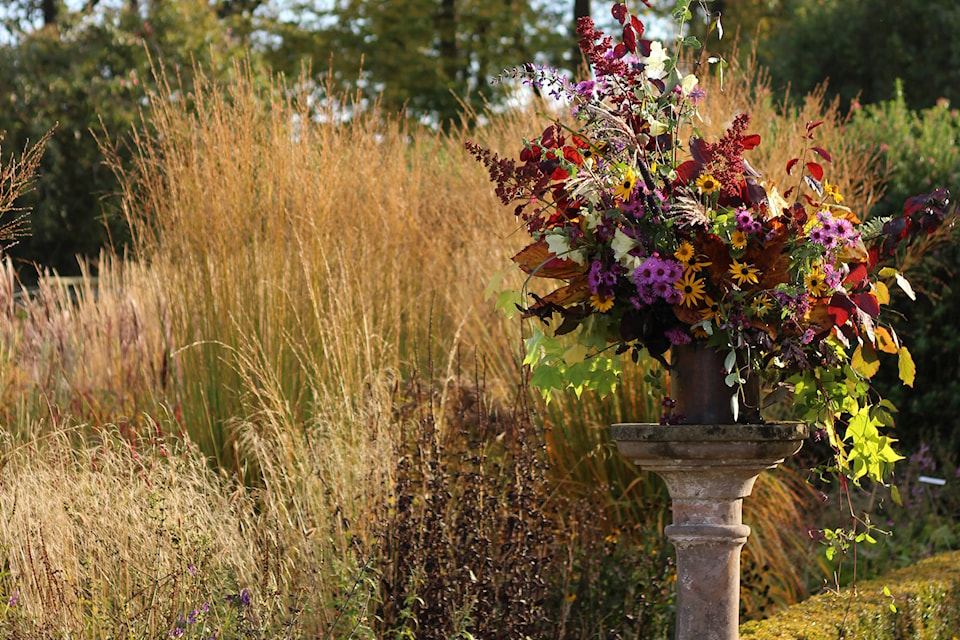There comes a point in autumn when fruit eclipses root. When we stop watering and start ripening—the tomatoes we push, squashes we harden, and flowers we encourage to set seed.
The garden leans into autumn’s golden light almost as if knowing how beautiful it will look: a swan song in soft sun, then a brilliant feint as it strikes cobwebs and calyces. And suddenly as if we hadn’t been paying attention, we notice it all: the last shining blackberry, a backlit orange leaf, the powdery duff of a quince.
Texture means many things to a garden; relief, light, softness, and also its inverse: clarity. Silhouettes slip into focus in the fall and there’s a cinematic romance to the season, almost as if we see our world side lit, Vermeer-esque—the light close enough to draw our attention to a subject and yet diffuse enough to blur a scene.
I recently returned from teaching at the Cambo Estate in Scotland where low-angled light and mist are as much a part of the success of the garden as the plant choices which play to the Scottish weather. Seed heads are left standing until February to catch the dew and frost. Grasses arch, softening vistas, creating mystery, veiling burgundies, purples, and yellows in beige. Garish Asters and scorching Rudbeckias are set to simmer behind a haze of seeds.
Cambo operates on a strict ‘no staking, no chemicals’ policy, so what stands in the borders in fall, stands, through its decay. The grasses heave and splinter in winter’s gales and I like the honesty of a such a garden. Aesthetically, I like to see plants age. Ecologically, I know it’s better for the health of the garden if they do.
Cambo is designed naturalistically, which in today’s parlance means an interweaving of grasses and perennials with occasional annuals for interest. The gardeners cut the borders back with hedge trimmers in spring. They process the debris right there: pop it into a chipper and use the ground up bits for mulch. No feeding, no tying, no fussing. Just great plant choices suited to the site.
Texture—of leaf, flower, and seed head—is of primary concern in such a garden. It may mean playing with light intentionally, choosing diffusion in places and crisp outlines in others. Deep brown spires of perennials become sculptural, heavier, capable of balancing the saturated floral colours of fall. Like a layered haircut meant to soften a jawline, shagginess and complexity in autumn should reign.
Can you tell I am smitten by the season?
Such an opinion supports my autumnal gardening fatigue of course. Both I and the garden are healthily resigned in October. The plants have run their course, I’ve done my best, and all spring’s hope is finally exhaled. What we as gardeners forgot to do—cut back, pick, yank, weed—is there to see, but no longer glaring. Fog is the icing on our cake.
Christin Geall is an avid Oak Bay gardener and creative non-fiction writing instructor at the University of Victoria.
